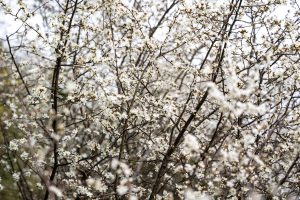An unusually quick change from summer to autumn
Not sure about you, but October seems to have sneaked up on us rather unexpectedly this year. This morning it was wet, windy and decidedly chilly. And if you’re also suffering a bit from losing a sense of time, then no doubt it’s because of the unusually dry and warm September most of us across the UK have enjoyed. In fact, and as you’ve no doubt also heard on the news, apparently this September has been the driest on record. Which has been great news for farmers, and those on the east Sutherland coast near to me have had an unusually easy time of gathering in their barley harvest ready for malting and destined for whisky production.
But despite summer extending right into September, my breeding swallows were still away by the middle of the month – as they usually are. This year they successfully had two broods, the first with five young and the second with four. This pattern of a larger second brood is consistent with previous years, and I put it down to the much longer days when the first brood is being fed, and therefore considerably more insects can be caught in any one day. Overall, the brood size we have is high because our local habitat of wooded glen, river, croft and farmland with plenty of livestock, ensures an abundance of flying insects (and I mean an abundance…). So this compares to an area of arable farmland – even when it’s farmed with nature in mind such as at Vine House – where a brood size is normally no more than three.
With all the summer migrants now headed south and just ahead of any of the winter migrants arriving – the first ones I usually see are Pink-footed and Greylag geese arriving from the east, and Redwings and Fieldfares arriving from the west – the first week of October is one of the quietest for birds in the north of Scotland. So right now I’m using my time to clean out nest boxes and set up my feeding station ready for the winter ahead and the huge influx of Coal tits, Siskins, Chaffinches and Goldfinches I always see. So the summer might be gone and my Swallows with it, but the changing seasons always provide something to look forward to.


